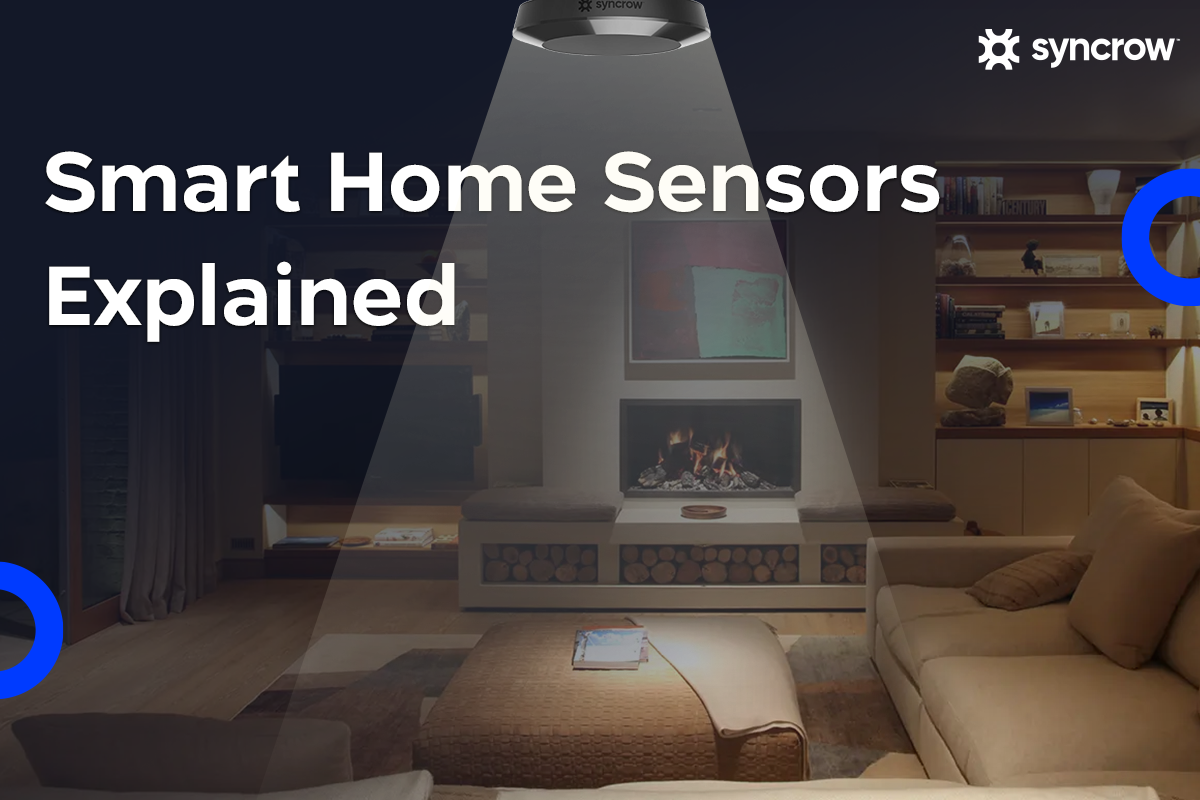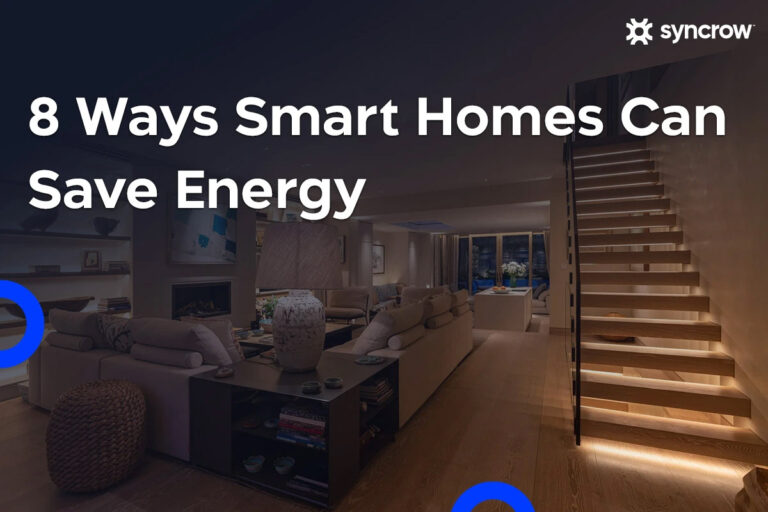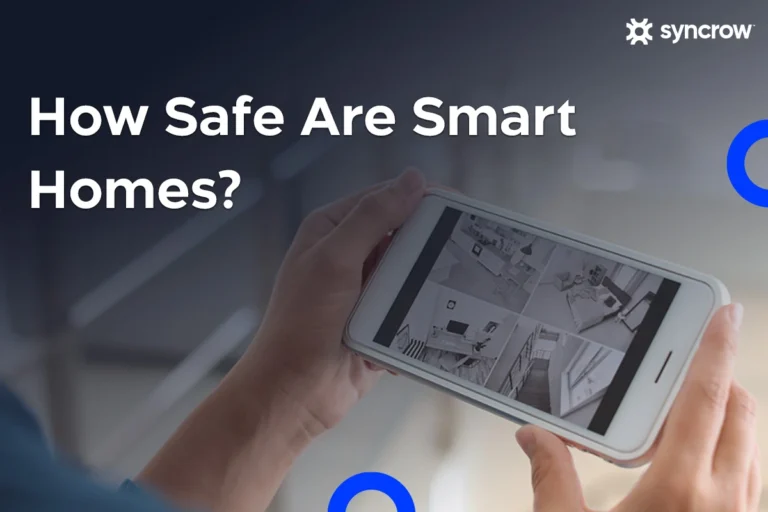In the age of smart technology, smart home sensors are the silent guardians working behind the scenes to make homes more secure, efficient, and comfortable. From detecting motion in an empty room to alerting homeowners about a water leak or a sudden change in air quality, these small but powerful devices are the building blocks of smart home automation.
Whether you want to conserve energy usage, improve your home safety, or just enjoy a higher level of convenience, smart home sensors are essential. This blog dives deep into what these sensors are, how they work, and how you can select the best options to upgrade your home with intelligence and automation.
What is a smart home sensor?
A smart home sensor is a device that detects specific physical or environmental changes, such as motion, temperature, humidity, or gas, and communicates that data to a smart home hub or smart home app. These sensors trigger responses based on the changing environment, such as lights turning on, thermostats adjusting temperatures, or alerts being sent to your smartphone.
Smart sensors form the network of any smart home system, enabling real-time decisions and automation based on the data they gather. Whether it’s a motion sensor that turns on lights when someone enters the room or a window sensor that sends an alert when a window is opened or closed, these components bring intelligence to your space.
Types of smart sensors
There are many different sensors used in homes. Each type serves a specific function, contributing to overall home performance, safety, and convenience. Overall, they rely on the Internet of Things (IoT) technology.

1. Motion sensors
Perhaps the most common, motion sensors detect movement in a designated area. These are crucial for home security, as they can trigger alarms, turn on lights, or send an alert when someone enters a room uninvited. They’re also used to automatically turn on appliances when occupancy is detected.
2. Temperature sensors
A temperature sensor monitors the indoor temperature and shares this information with your smart thermostat. When the sensor detects a drop or rise in temperature, it can trigger your HVAC system to adjust accordingly, helping reduce energy consumption.
3. Light sensors
Light sensors measure the amount of ambient light in a room. These can be used to adjust window blinds, lighting, or even trigger smart devices to maintain the desired brightness level, improving comfort and reducing electricity bills.
4. Water leak sensors
These sensors are designed to detect unwanted moisture, often placed under sinks, near bathtubs, or behind appliances like dishwashers and washing machines. When a leak is detected, the sensor can send an alert instantly to prevent costly water damage.
5. Gas leak sensors
Gas leak detectors detect combustible gases such as methane or propane. They are essential in homes that use gas appliances and can be life-saving by triggering alerts or even automatically shutting off gas valves.
6. Smoke sensors
Often integrated with carbon monoxide detectors, smoke sensors monitor the air for signs of fire and toxic gases. These smart sensors can send an alert, flash connected lights, and even trigger smart home devices to unlock doors for a safe exit.
7. Door/window sensors
Door/window sensors are small magnetic sensors that track whether a door or window is opened or closed. Essential for home security systems, they can trigger alarms or send an alert to your phone. Multiple door and window sensors can cover all entry points in your home.
8. Air quality sensors
Air quality sensors monitor pollutants, VOCs, and other air quality metrics. The sensor can detect unhealthy conditions and trigger air purifiers, humidifiers, or dehumidifiers. These are especially helpful for families with children or people who suffer from respiratory issues.
How smart home sensors work: An example
Let’s say you have an air quality sensor in your living room. Throughout the day, it measures carbon dioxide, PM2.5, VOCs, and other metrics.
When pollution levels exceed your threshold, it sends an alert to your smart home app, which then automatically triggers a series of actions: The smart thermostat adjusts ventilation, the humidifier balances humidity, and the purifier kicks in to cleanse the air.
Technologies used in smart home sensors
Behind the scenes, a mix of advanced technologies powers these smart home devices.
Infrared
Infrared sensors are commonly used in motion sensors. They detect heat signatures from people or appliances, activating when motion is detected.
Ultrasonic sensors
These work by emitting ultrasonic waves and measuring their reflection. Changes in these reflections indicate movement, making them useful for detecting intruders or occupancy.
Magnetic switches
Most often found in door and window sensors, magnetic switches open or close an electric circuit depending on whether two components are aligned. When the door or window moves, the sensor detects it.
Top smart home automation solutions based on sensors
Here are the primary benefits of building your smart home using sensor-driven automation.
1. Energy saving
These sensors improve energy efficiency by dynamically adjusting lights and AC usage based on real-time conditions. Motion sensors and occupancy detectors ensure that lights and appliances only stay on when someone is in the room, preventing unnecessary energy waste.
Light sensors can dim or switch off the lights during daylight hours, while temperature sensors help regulate the thermostat depending on the time of day or outdoor climate.
2. Health and air quality
Air quality sensors and humidity sensors play a vital role in improving indoor wellness. They detect harmful particles and allergens, enabling smart home systems to automatically turn on filters, humidifiers, or ACs as needed.
3. Security
From door locks and window sensors to motion sensors and security cameras, your home security system becomes proactive. It detects suspicious activities and sends notifications instantly to your phone, no matter where you are.
4. Comfort and convenience
The best sensors in a smart home can improve daily routines by enabling automatic actions based on your presence or activity. Lights turn on or off based on occupancy, room temperature adjusts to preferred levels, and devices like coffee machines or AC can activate as you enter a specific space. These features reduce the need for manual control and make everyday living more convenient.
How to choose the right smart home sensors
Choosing the right smart home sensors isn’t just about price but also about integration, ease, and functionality.
Compatibility with other devices
Make sure your sensors work with your existing smart home technology, like Amazon Alexa, Google Home, or Apple HomeKit. This allows seamless control and synchronization across your ecosystem.
Ability to install without rewiring or modification
The best smart home sensors are wireless and offer an easy installation process – without needing to rip into walls. This is crucial for renters or anyone not looking to renovate.
Ease of use
User-friendly apps, intuitive setup, and reliable notifications are paramount. Sensors can also include battery life indicators and customizable thresholds to enhance control.
Price
While affordability matters, it’s advisable to invest in sensors that are reliable and backed by good support or a reputable smart home company in the UAE. Consider the total cost of ownership, including maintenance and replacements.
Find the best home automation sensors for your home with Syncrow
At Syncrow, we specialize in building smarter environments using cutting-edge smart home technologies. Our ecosystem of smart home devices includes sensors that optimize energy consumption, enhance home security, and elevate indoor wellness. From motion sensors to air quality monitors, we tailor solutions for your unique needs.Our team offers free consultations to help you identify which sensors suit your lifestyle and home setup. Whether you’re looking to improve comfort, safety, or sustainability, Syncrow can design a smart home system that delivers results. Contact us today and take the first step toward a connected, intelligent home.




